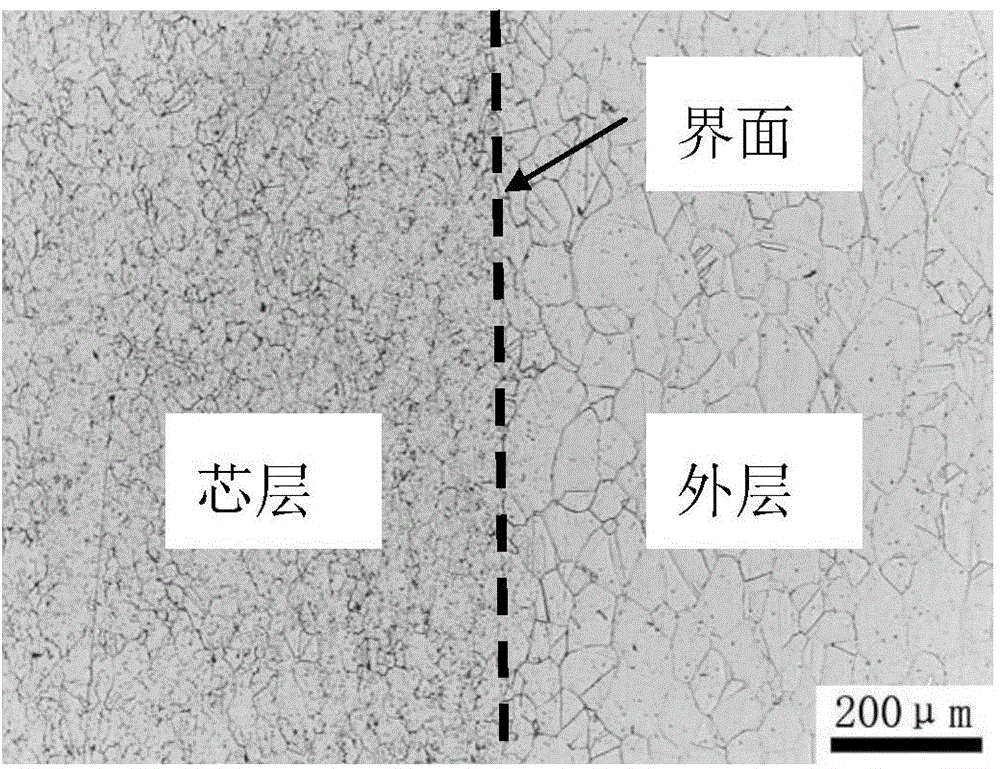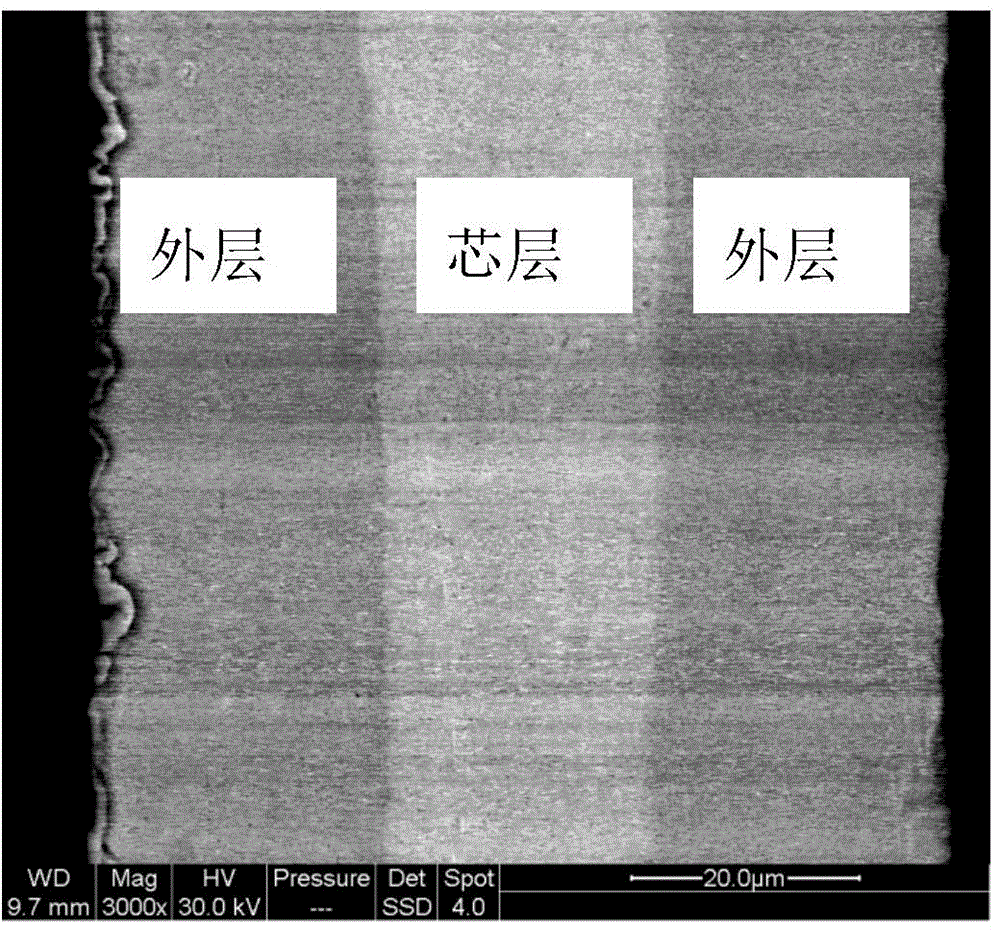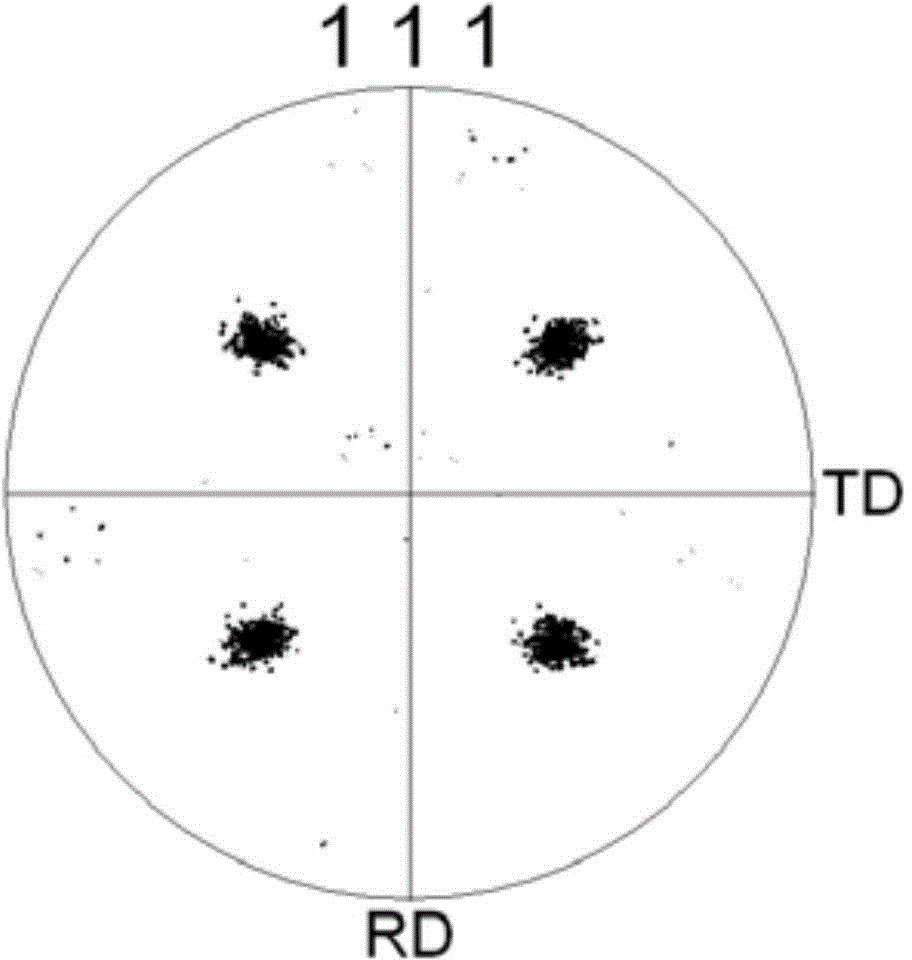A kind of preparation method of initial composite billet for non-magnetic Cu-based composite base tape
A technology of composite ingot and composite base tape, which is applied in the field of preparation of initial composite ingot, can solve the problems of a large number of holes, can not meet the application of YBCO high temperature coated conductor strip, complex preparation process, etc.
- Summary
- Abstract
- Description
- Claims
- Application Information
AI Technical Summary
Problems solved by technology
Method used
Image
Examples
Embodiment 1
[0018] The Cu-Ni alloy obtained by vacuum induction smelting with a nickel-Ni atomic percentage of 45% is subjected to high-temperature forging and wire cutting, and the obtained billet is subjected to surface sandblasting treatment (code A) as the outer layer of the composite billet. The sand material is quartz sand, and the particle size of the sand material is 1mm~1.5mm; the Ni-W mixed powder (code-named powder B) obtained by high-energy ball milling with an atomic percentage of tungsten W of 9.5% is used as the core layer. The Cu-Ni alloy after sandblasting and the ball-milled Ni-W powder are layered and placed in the mold in the order of ABA. Using spark plasma sintering technology, the mold filled with ABA is placed in the sintering equipment, and pressure sintering is performed under vacuum conditions. The sintering temperature is 750°C and the time is 8 minutes. The sintered composite billet is hot rolled , The hot rolling temperature is 900℃ and the holding time is 2h,...
Embodiment 2
[0020] The Cu-Ni alloy with 43% Ni by weight obtained by vacuum induction melting is subjected to high temperature forging and wire cutting, and the obtained billet is subjected to surface sandblasting treatment (code named A) as the outer layer of the composite billet. The sand material is quartz sand, and the particle size of the sand material is 1mm~1.5mm; the Ni-W mixed powder (code-named powder B) obtained by high-energy ball milling with an atomic percentage of tungsten W of 9.5% is used as the core layer. The Cu-Ni alloy after sandblasting and the ball-milled Ni-W powder are layered and placed in the mold in the order of ABA. Using spark plasma sintering technology, the mold filled with ABA is placed in the sintering equipment, and pressure sintering is carried out under vacuum conditions. The sintering temperature is 800°C and the time is 5min. The composite billet obtained by sintering is hot rolled. The hot rolling temperature is 900℃ and the holding time is 2h. The d...
Embodiment 3
[0022] The Cu-Ni alloy with 42% Ni by weight obtained by vacuum induction melting is subjected to high temperature forging and wire cutting, and the obtained billet is subjected to surface sandblasting treatment (code named A) as the outer layer of the composite billet. The sand material is quartz sand with a particle size of 1mm~1.5mm; the Ni-W mixed powder (code-named powder B) obtained by high-energy ball milling with an atomic percentage of tungsten W of 9.5% is used as the core layer. The sand-treated Cu-Ni alloy and the ball-milled Ni-W mixed powder are layered in the mold in the order of ABA. Using spark plasma sintering technology, the mold filled with ABA is placed in the sintering equipment, and sintered while pressing under vacuum conditions. The sintering temperature is 800℃ and the time is 5min. The composite billet obtained by sintering is hot rolled. , The hot rolling temperature is 900℃ and the holding time is 2h, the deformation of the first pass of hot rolling...
PUM
| Property | Measurement | Unit |
|---|---|---|
| particle diameter | aaaaa | aaaaa |
| yield strength | aaaaa | aaaaa |
| yield strength | aaaaa | aaaaa |
Abstract
Description
Claims
Application Information
 Login to View More
Login to View More - R&D
- Intellectual Property
- Life Sciences
- Materials
- Tech Scout
- Unparalleled Data Quality
- Higher Quality Content
- 60% Fewer Hallucinations
Browse by: Latest US Patents, China's latest patents, Technical Efficacy Thesaurus, Application Domain, Technology Topic, Popular Technical Reports.
© 2025 PatSnap. All rights reserved.Legal|Privacy policy|Modern Slavery Act Transparency Statement|Sitemap|About US| Contact US: help@patsnap.com



